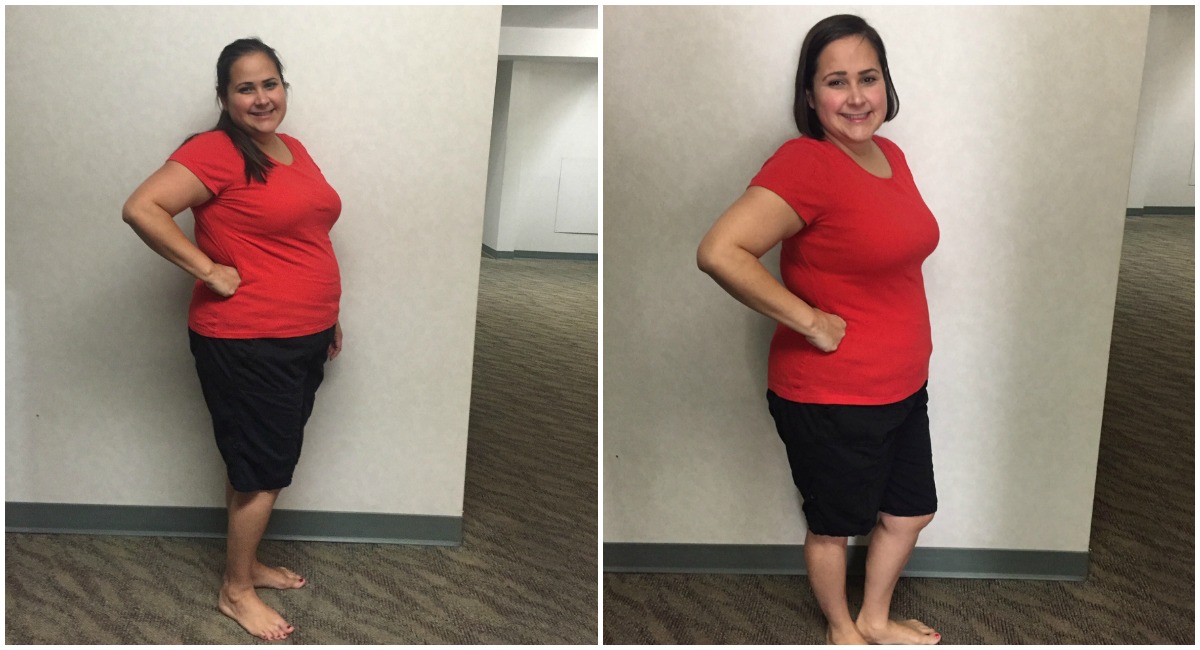Real Weight Loss: Karla Schallies

Karla Schallies, before and after/Photos provided
Name: Karla Schallies
Age: 36
Location: Brookline
Occupation: Professor of medical microbiology and the basis of life at UMass Boston
Total weight lost: 32 pounds and counting
Karla Schallies heard it again and again. If she just lost some weight, her doctors kept telling her, she could better manage her type 2 diabetes.
“I was like, ‘Sure, of course, everyone says that.’ But it’s not as easy as you think,” she remembers.
She kept up that refrain until her doctor told her that, in order to keep her condition under control, she’d have to begin injecting herself with insulin every single day. “At that point, I was like, ‘What were you saying about weight loss?'” she laughs.
Schallies’ doctor recommended Joslin Diabetes Center’s Why WAIT program, a multi-pronged system meant to help patients manage diabetes while dropping pounds.
In September, she entered the 12-week program, which includes weekly check-ins, hoping to lose a modest 14 pounds. In December, she graduated 30 pounds lighter and insulin-free. She’s lost another two pounds since, and hopes to lose 16 more, eventually landing at her goal weight of 150 pounds.
“I am a molecular biologist. I should have known. But you don’t see it; it’s not that easy,” Schallies says. “I feel much, much better [now]. I have more energy. I feel happier. It’s far from complete, but the first phase was incredible.”
While the Why WAIT program only accepts diabetic patients at this point, its methodology is appropriate for anyone trying to slim down. Want to try it? Here’s how Schallies lost the weight:
Diet
New Why WAIT members have meal replacement shakes for breakfast and lunch; two daily snacks, such as an apple with a cheese stick; and a program-approved dinner, such as vegetable lasagna. After six weeks, they may make breakfasts and lunches within the program’s guidelines, which suggest 40 percent of daily calories come from carbohydrates, 30 percent from protein, and 30 percent from fat.
Schallies monitors her blood sugar carefully and sticks to roughly 1,200 calories per day, but swears it never feels like deprivation. “I immediately thought, ‘This is crazy. I’m on a diet of 1,200 calories. That’s less than I have ever eaten, and you think I’m going to have energy and I’m not going to be hungry?'” she says. “During the whole program, I was never hungry and I was always full of energy. It is incredible.”
Perhaps best of all, Shallies says Why WAIT has given her a new nutrition philosophy, courtesy of a figurative scenario she learned during the program: “If you are driving from Boston to New Hampshire, and…you end up in Maine, are you going to continue driving to Maine, or are you going to take a U-turn and go back into the correct road to New Hampshire?” she says. “If you one day break the diet, it’s not the end of the world.”
Exercise
During Why WAIT, Schallies exercised between three and six times per week. Post-graduation, she works out five times a week, for 30 to 90 minutes at a time. She favors cardio, opting for walking intervals—30 seconds fast, 30 seconds slow—to minimize impact.
The mother of two also picked up a trick that revolutionized her fitness routine, she says. Instead of listening to music, which she doesn’t enjoy, a program advisor suggested she watch Netflix while she walks on the treadmill. “I start a movie but don’t end it, so I have the [motivation to] come back tomorrow,” she says. “I can be an hour and a half doing exercises without even noticing.”
Why WAIT’s next session begins in May. If you have diabetes and are interested in joining the program, click here.

